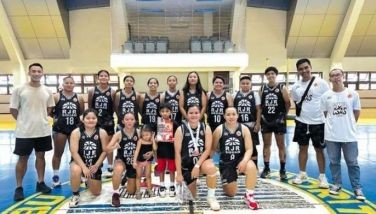Developing sports the DepEd way
Over the weekend and in the next few days, you’ll read news about the ongoing Cebu City Olympics and you’ll also hear about other City or Division meets taking place in other places. Also ongoing is the Mandaue City Division Meet (that you won’t read about in the news), and a host of others. What are these? Why all these meets? These are part of the structure of sports competitions managed by the Department of Education. Sports is part of the department’s mandate and these competitions form the core of their program. The ultimate level is the Palarong Pambansa which gathers the best athletes from the different DepEd regions.
Let’s review a bit here. The first level of sports competitions starts at the unit or district level of each division of the DepEd. The winners of the unit or district meets then play each other in the division meet (taking place right now in the divisions of Cebu City and Mandaue City). The best teams and athletes from the division meet then represent the division in the regional competitions. For us, this is the Central Visayas Regional Athletic Association (CVIRAA). Here, the top divisions are always Cebu City, Mandaue City and Cebu Province. Bohol Province, Tagbilaran City, Naga City, Danao City and other component cities are also part of the CVIRAA. It has been reported that Naga is hosting the CVIRAA in January 2017. The winners and best athletes from the CVIRAA will represent the Central Visayas in the Palarong Pambansa which will be held in April or May 2017 (in Dumaguete or Antique). One can’t help but notice the bottoms-up approach of this structure of competitions, tapping schools as the source of athletes. It’s an excellent model, and if you read all the memos and legal documents on this, you would be impressed (RA 10588 or the Palaro Act of 2013, DepEd Memos, etc.).
Having said all these, how are we to rate the sports program of the DepEd over-all? Can they claim to be responsible for the success of the biggest sports achievers of the country? What was the DepEd’s role in all this?
What we have here is a blueprint for a series of competitions. This is good, but there is something missing. How can we have high-level competitions if one doesn’t have a program for sports development in schools? How can a unit/district or division meet bring out top-notch competition if the schools involved had minimal practice or training?
I’d like to see the DepEd develop a year-round program for sports where teams will train, practice and compete. The “compete” part is there but I don’t see long-running school-based sports programs where teams train all year-round. It’s common to find out that athletes barely train for the unit and division meets. They end up competing for the sake of competing; to get the tournament done. Some are even plucked out of the blue to play for their schools. And when they’re eliminated, they quit training and wait for the next unit meet.
The DepEd sports program should not be limited to just the unit/district, division meets, CVIRAA and the Palaro. Let’s have the athletes train all year-round and not just for these short-term competitions. One of the main reasons why the private schools almost always come out on top is that their sports programs are comprehensive and last all-year long. Their exposure goes beyond the DepEd sports competitions. They compete practically all school-year long even if they’ve been eliminated from a unit or division meet. Meanwhile, those of the public schools are limited to within the time frame of the unit and division meets. When they lose, they stop practicing. There are a few exceptions to this lot, but these are rare and few. We should never forget that there are thousands of talents in public schools as well. If their potential can tapped, who knows how far they can go. One of the best examples is the Catmon Elementary School which has dominated elementary girls’ volleyball for a decade, winning the Palaro gold several times already. The Abellana National School teams are also consistent with their teams visible from June to March. These programs went beyond the usual unit and division meet level and continued to train on their own “sariling sikap” ways. The key here is to tap the support of the local government units and the private sector of the local school’s community. I don’t know of public schools that have the all-out support of their administrators, wide resources to tap a coach or trainers, buy equipment and uniforms; and allocate time for practice and competitions. Thus, the need for outside help.
The DepEd sports program of competitions has filled up only half of the glass. It’s time to fill up the other half.
***
Time-out: Thanks to the one and only Dr. Danilo Villadolid, Dr. Benjie Tiongzon and Coach Francis Ramirez for their inputs.
- Latest





















